Key Takeaways
Contemporary abstract steel art challenges traditional boundaries by merging precise engineering with imaginative forms. At its core, this genre balances recognizable shapes—like human figures or natural elements—with experimental abstraction, creating works that feel both familiar and avant-garde. Artists such as Brian M Jones employ advanced techniques like laser cutting and hydraulic shaping to transform rigid steel into flowing, organic compositions.
"Steel is often seen as cold and industrial, but in the hands of an artist, it becomes a medium of surprising warmth and movement." — Brian M Jones
A key feature of this art form is its ability to reinterpret industrial materials. For instance, welded steel plates might mimic the texture of tree bark, while polished surfaces reflect light in ways that evoke water or glass. Below is a comparison of common techniques used to achieve realism and abstraction:
| Realism Elements | Abstract Techniques |
|---|---|
| Detailed anatomical contours | Geometric fragmentation |
| Textured surface finishes | Asymmetrical balance |
| Representational motifs | Non-linear kinetic energy flows |
Tips for appreciating these works include observing how light interacts with angled surfaces or how kinetic sculpture principles influence perceived motion. By blending technical precision with artistic intuition, contemporary steel sculptures redefine spatial dynamics, inviting viewers to explore the tension between solidity and fluidity.
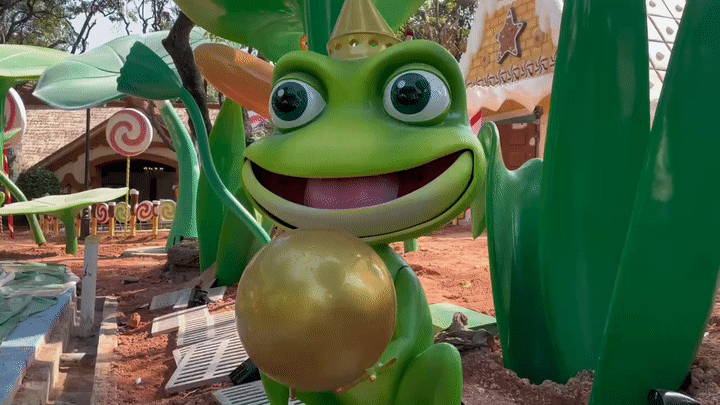
Defining Realism in Abstract Steel Sculptures
Realism in abstract steel sculpture exists at the intersection of recognizable form and experimental expression. Unlike traditional figurative works, these pieces retain subtle references to natural shapes—a curved line echoing a human spine or a textured surface mimicking weathered stone—while embracing abstraction’s emotional ambiguity. Artists achieve this duality by manipulating industrial-grade steel through techniques like precision cutting, heat-warping, and layered welding. The material’s inherent rigidity is counterbalanced with fluid organic contours, creating tension between mechanical exactness and biomorphic spontaneity.
This approach redefines realism not as literal replication but as the evocation of tangible experiences within abstract frameworks. A Realistic sculpture might capture the motion of wind through angled planes or the weight of water via polished, undulating surfaces. By grounding abstraction in tactile details, artists invite viewers to decode familiar elements within avant-garde compositions, bridging the gap between industrial materiality and visceral human response. Such works demonstrate how steel, often associated with cold functionality, can convey warmth and dynamism when shaped by intentional artistic vision.
Brian M Jones' Steel Art Techniques Explored
Brian M Jones’ approach to contemporary abstract steel art bridges industrial rigor with artistic spontaneity. Central to his methodology is the use of stainless steel sculpture techniques that transform cold, rigid materials into works brimming with movement. By employing precision laser cutting and hand-forged welding, Jones creates geometric frameworks that serve as skeletons for organic, flowing forms. His process often begins with mathematical modeling to ensure structural integrity, followed by improvisational adjustments that introduce asymmetry and tactile depth.
A defining feature of Jones’ work lies in his manipulation of surface textures. Through controlled oxidation and layered polishing, he achieves contrasting finishes—glossy planes juxtaposed against matte, weathered sections—that mimic natural erosion. This interplay of industrial precision and organic unpredictability allows his sculptures to evoke both technological advancement and primal resonance. His pieces often incorporate negative space as an active design element, inviting light and shadow to interact dynamically with the steel’s reflective surfaces. By maintaining equilibrium between calculated engineering and intuitive artistry, Jones’ techniques redefine how steel functions as a medium for contemporary expression.
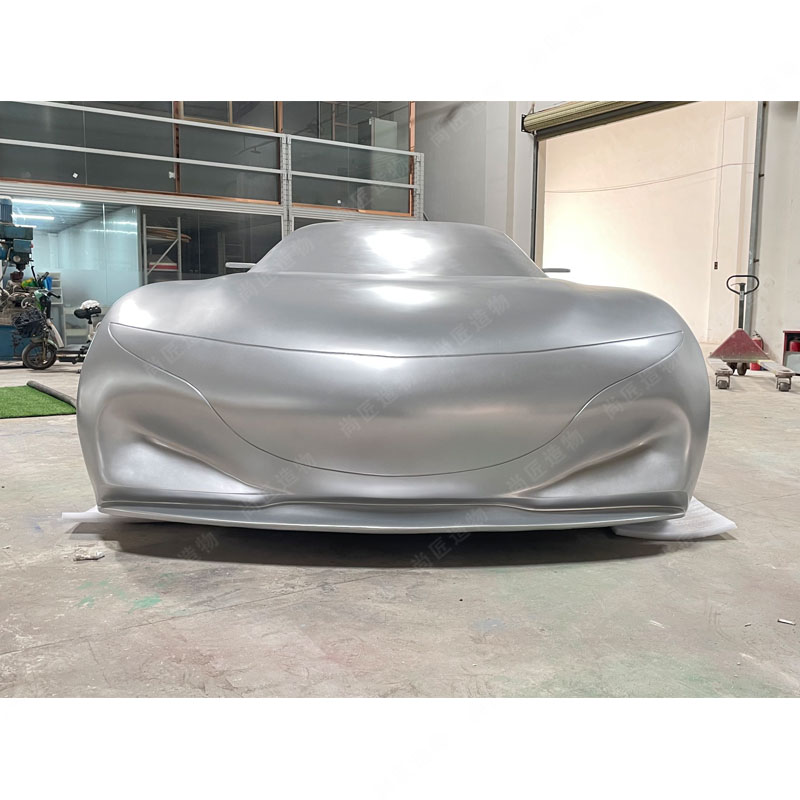
Precision Engineering Meets Organic Fluidity
The interplay between precision engineering and organic fluidity defines a central tension in contemporary abstract steel art. Artists like Brian M Jones employ advanced fabrication methods—laser cutting, CNC machining, and computational modeling—to achieve geometric exactness in their steel forms. These techniques ensure structural integrity while allowing for intricate patterns, such as tessellated surfaces or angular protrusions that catch light dynamically. Yet, the rigidity of industrial processes is counterbalanced by deliberate imperfections: hand-forged curves, asymmetrical contours, and oxidized textures that mimic natural erosion.
This duality reflects a broader dialogue between human intuition and mechanical precision. For instance, Jones’ sculptures often feature sharp, engineered edges that dissolve into undulating waves, creating visual rhythms reminiscent of flowing water or wind-sculpted landscapes. Such works challenge perceptions of steel as a static material, instead highlighting its capacity to evoke movement and biological growth. Notably, this approach resonates with techniques seen in Fiberglass sculpture, where synthetic materials are manipulated to replicate organic softness. By merging calculated design with spontaneous gesture, artists transform cold-forged metal into compositions that feel paradoxically alive, bridging the industrial and the ephemeral within modern spatial contexts.
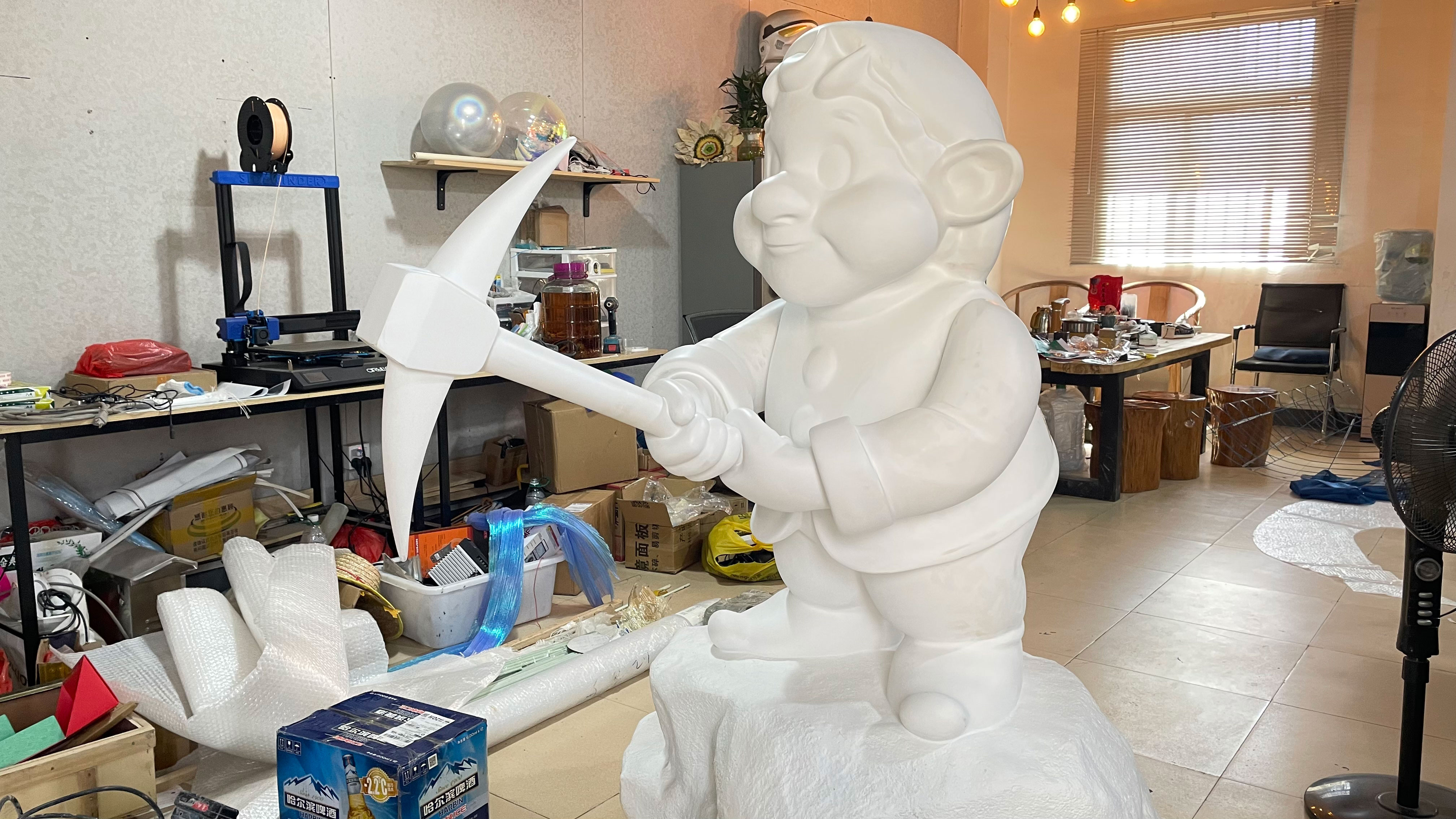
Transforming Industrial Materials Into Art
The evolution of steel from industrial utility to artistic medium reflects a deliberate reimagining of materiality. Artists like Brian M Jones challenge conventional perceptions by repurposing cold-rolled steel, I-beams, and reclaimed machinery into sculptures that transcend their utilitarian origins. This process involves meticulous techniques—plasma cutting, precision welding, and controlled oxidation—to transform rigid sheets and bolts into flowing, abstract compositions. The juxtaposition of raw, unpolished edges with mirror-finished surfaces creates tactile contrasts, evoking narratives of industrialization and organic growth.
A defining feature lies in retaining traces of the material’s industrial past. Grind marks, weld seams, and rust patinas become intentional aesthetic elements, bridging the gap between factory floors and gallery spaces. This approach aligns with broader trends in Cartoon sculpture, where playful reinterpretations of form intersect with serious material exploration. By embedding structural integrity into artistic expression, such works redefine steel’s role—not merely as a construction staple but as a dynamic medium capable of conveying emotion, motion, and conceptual depth within contemporary abstract art.

Dynamic Textures in Modern Steel Sculptures
Modern steel sculptures achieve dynamic textures through deliberate manipulation of industrial materials, blending mechanical precision with organic irregularities. Artists like Brian M. Jones employ techniques such as controlled oxidation, layered welding, and abrasive surface treatments to mimic natural patterns—flowing water, weathered stone, or wind-swept dunes—while retaining steel’s inherent rigidity. This interplay creates tactile contrasts: smooth, mirror-like planes juxtaposed against jagged, rust-etched grooves. Such textures not only engage visual curiosity but also alter how light interacts with the sculpture, casting shadows that evolve with ambient conditions.
By integrating IP character sculpture principles, artists anchor abstract forms in relatable visual language, allowing viewers to perceive motion or transformation within static metal. For instance, hammered surfaces might suggest kinetic energy, while acid-washed finishes evoke geological erosion. These textural choices bridge the gap between industrial materiality and emotive expression, reinforcing steel’s versatility in conveying both structural strength and ephemeral delicacy. The result is artwork that challenges perceptions of metal as cold or unyielding, inviting closer inspection of its nuanced surface narratives.
Balancing Form and Abstraction in Metalwork
The interplay between recognizable structure and experimental design defines contemporary abstract steel art. Artists like Brian M. Jones navigate this duality by grounding their work in tangible shapes—geometric angles or biomorphic curves—while introducing abstract elements that challenge traditional perceptions. For instance, a sculpture might feature a steel framework resembling a human figure, only to dissolve into asymmetrical planes or fragmented surfaces. This tension requires meticulous planning: precise welding aligns with spontaneous texturing, and industrial-grade materials bend to mimic natural motion.
Techniques such as laser cutting ensure sharp, defined edges, while hand-hammered finishes introduce organic irregularities. The result is a visual dialogue between control and spontaneity, where rigid metal appears to flow or fracture. Light plays a critical role here, casting shadows that amplify both the sculpture’s physicality and its abstract illusions. By anchoring abstraction in relatable forms, these works invite viewers to interpret meaning without losing the raw, industrial essence of steel. This balance not only expands metalwork’s artistic possibilities but also bridges the gap between functional industrial design and purely conceptual art.
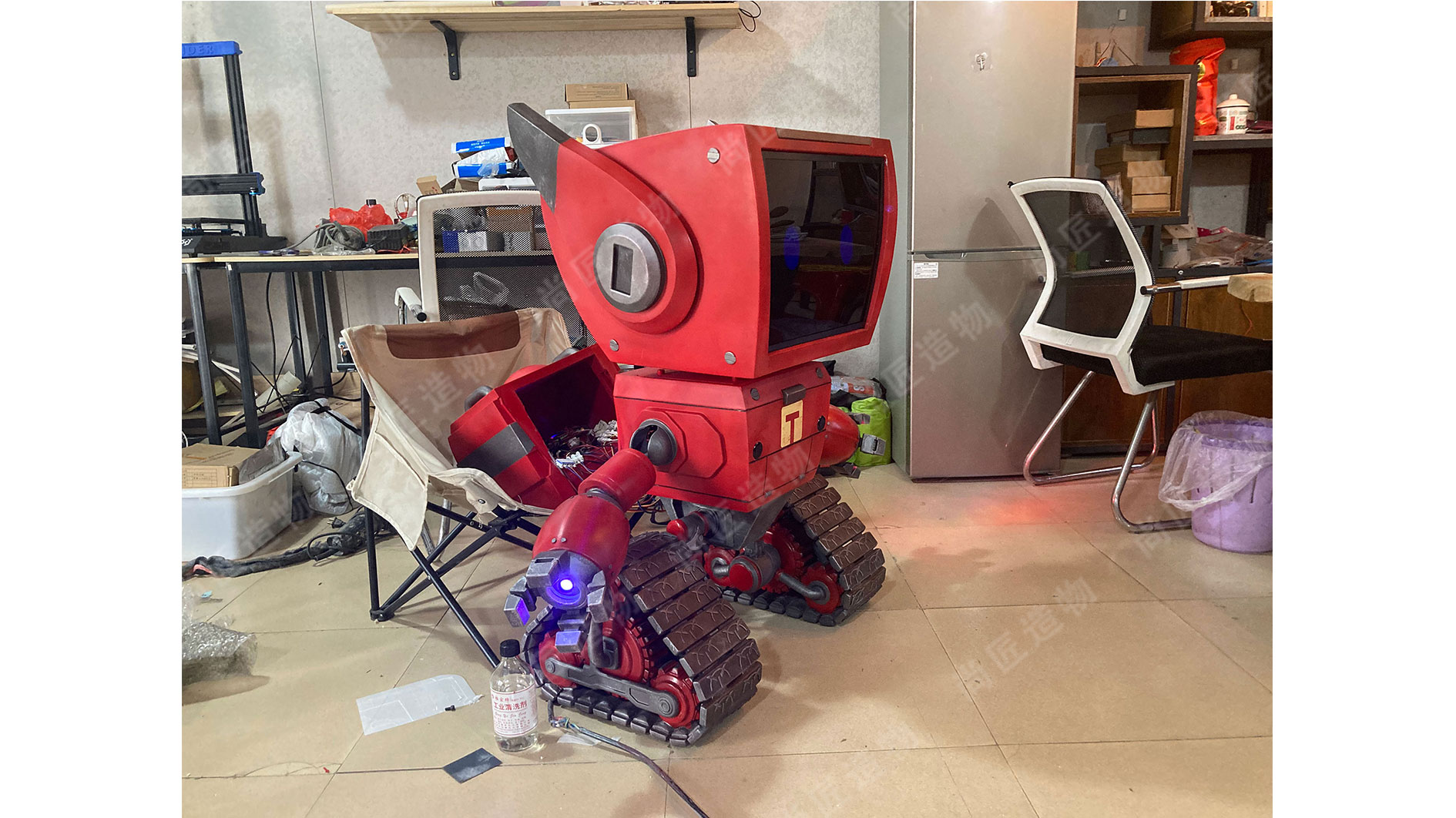
Contemporary Steel Art's Spatial Dynamics
The interplay between steel sculptures and their surroundings redefines how abstract art occupies physical space. Unlike traditional static forms, contemporary works leverage steel’s malleability to interact dynamically with light, architecture, and viewer perspectives. Artists like Brian M. Jones engineer pieces that respond to environmental factors—shadows shift across textured surfaces during daylight, while polished sections reflect ambient colors, creating illusions of movement. This spatial dialogue extends beyond galleries; installations in urban settings use scale and negative space to contrast industrial rigidity with organic curves. For instance, a coiled steel structure might appear weightless when suspended, challenging perceptions of metal’s density. The strategic placement of angular cuts or perforations further manipulates sightlines, guiding observers to experience the artwork from multiple vantage points. Such techniques not only emphasize steel’s versatility but also anchor abstract concepts in tangible, site-specific contexts. By harmonizing materiality with spatial awareness, these sculptures transform empty areas into immersive environments, bridging the gap between artistic abstraction and the physical world.

The Artistic Impact of Realistic Metal Sculptures
Realistic metal sculptures bridge the gap between classical artistry and modern abstraction, creating works that resonate across cultural and temporal boundaries. By grounding abstract steel forms in recognizable shapes—a human figure, a natural contour, or architectural fragment—artists forge visceral connections with viewers. These sculptures often challenge perceptions of industrial materials, transforming cold, rigid steel into pieces that evoke warmth and movement. In public installations, they become focal points that spark dialogue, while in private collections, they serve as meditative objects that blur the line between craftsmanship and conceptual art.
The interplay of light and shadow on polished or textured surfaces amplifies their emotional impact, with reflections mimicking organic rhythms found in nature. This duality—hardened steel embodying softness, rigid structures suggesting fluidity—reflects contemporary society’s tension between technological progress and the enduring human need for tactile beauty. By anchoring abstraction in realism, these works invite viewers to reinterpret familiar forms through an avant-garde lens, fostering both intellectual curiosity and sensory engagement. Their presence in shared spaces underscores steel’s evolving role from utilitarian material to a medium capable of expressing profound cultural narratives.
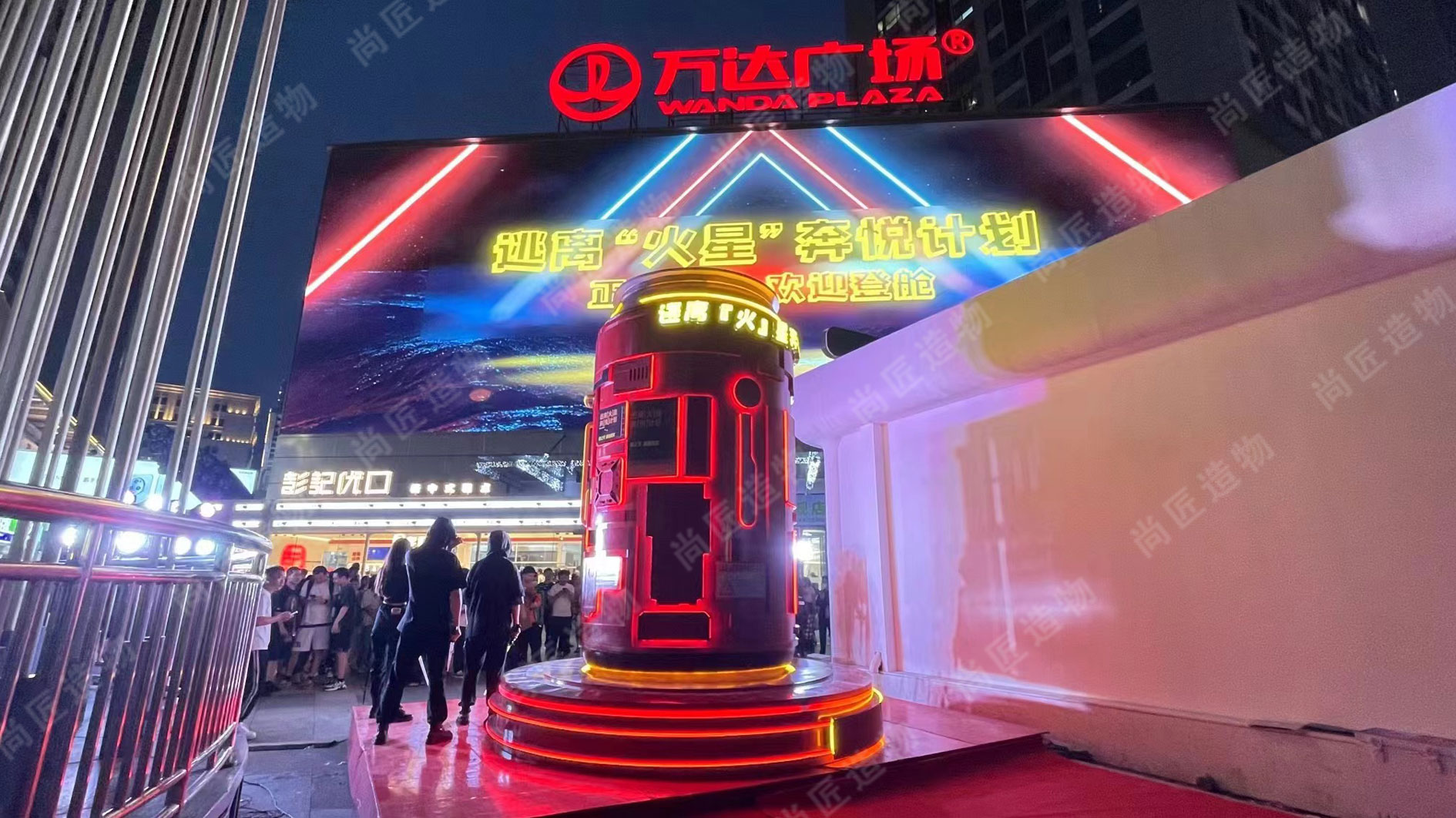
Conclusion
The exploration of realistic sculpture within contemporary abstract steel art reveals a compelling dialogue between technical mastery and artistic intuition. By examining approaches like those of Brian M. Jones, we see how industrial materials transcend their utilitarian origins through precise engineering and deliberate abstraction. The interplay of rigid steel with fluid, organic forms challenges traditional boundaries, inviting viewers to reconsider how “realism” can coexist with avant-garde expression.
This duality—balancing structural integrity with emotive texture—reflects broader trends in modern metalwork, where artists navigate the tension between form and concept. As steel sculptures occupy dynamic spaces, they not only reshape environments but also provoke questions about materiality and perception. Ultimately, the evolution of realistic elements in abstract steel art underscores a shared pursuit: transforming cold, industrial mediums into resonant narratives that bridge human creativity and the raw essence of modern design.
FAQs
What defines realism in contemporary abstract steel sculptures?
Realism in this context refers to the accurate depiction of forms or textures within abstract compositions. Artists achieve this by manipulating steel to mimic organic shapes or recognizable structures while maintaining avant-garde expression.
How do artists like Brian M Jones blend precision engineering with fluidity?
Jones employs techniques such as laser cutting for sharp angles and hand-forging to introduce curves. This combination creates tension between geometric rigor and natural movement, a hallmark of his work.
Can industrial materials like steel convey organic textures?
Yes. Through processes like oxidation, hammering, or acid etching, steel surfaces gain layered textures resembling wood grain, flowing water, or weathered stone, bridging industrial and natural aesthetics.
Why is balance between form and abstraction important in modern steel art?
Striking this balance allows sculptures to evoke familiarity without sacrificing experimental appeal. Abstract elements challenge perception, while realistic details anchor the viewer’s interpretation.
How do these sculptures interact with modern architectural spaces?
Their dynamic textures and hybrid forms complement minimalist interiors or industrial settings. The reflective quality of steel also interacts with light, altering the ambiance of a space over time.
What artistic impact do realistic metal sculptures have today?
They redefine material limitations, proving steel can embody both strength and delicacy. This duality sparks conversations about humanity’s relationship with industrial progress and natural beauty.
 ch
ch English
English






